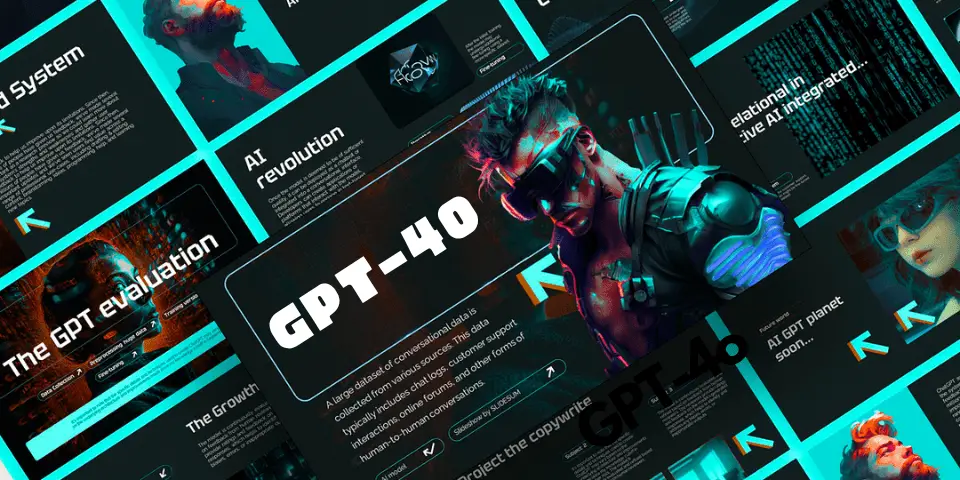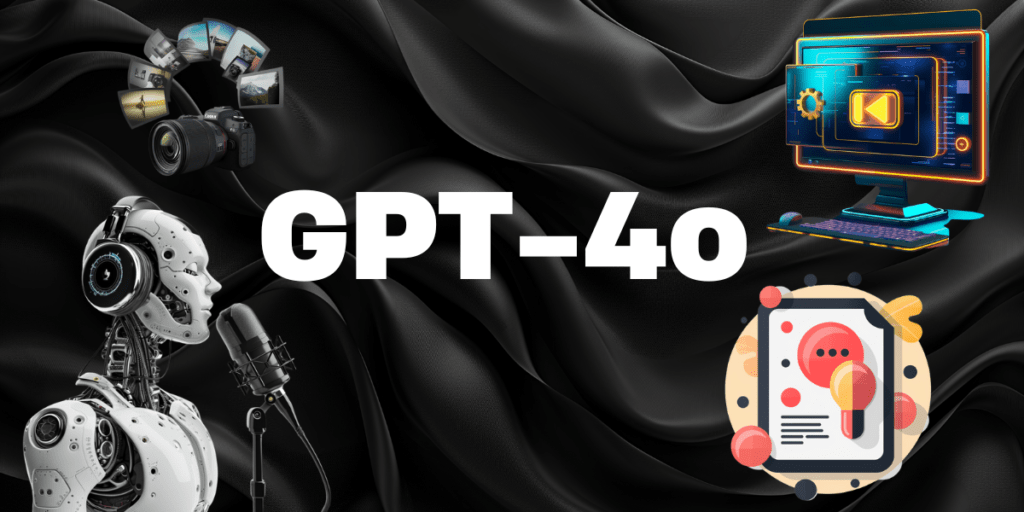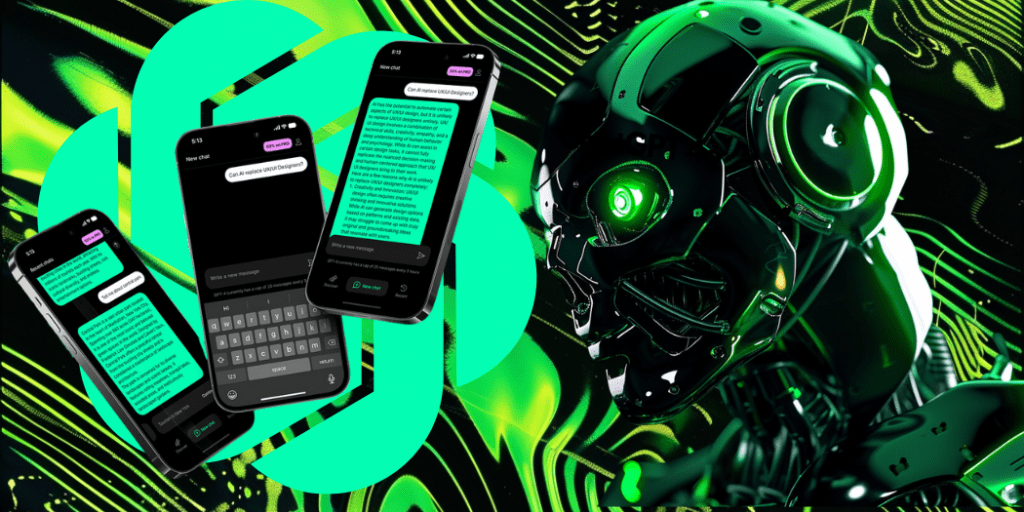Developed by OpenAI, this chatbot has consistently pushed the boundaries of what conversational AI can achieve. With the release of its latest version, GPT-4o, the excitement and anticipation were palpable.
OpenAI promised groundbreaking features, including a voice with humanlike inflexions, real-time video analysis, and improved language translation capabilities.
These advancements were showcased in an impressive online demonstration, where the bot even tutored a child on solving a geometry problem.
As the dust settles, it’s clear that the reality of GPT-4o falls short of its hype, revealing a broader trend of AI companies releasing underdeveloped products.
ChatGPT’s Promises
OpenAI’s latest version of ChatGPT, GPT-4o, was introduced with several new features designed to enhance user interaction and utility.
Among these, a new voice capability with humanlike inflexions and emotions stood out, aimed at making conversations with the chatbot feel more natural.
Another highly anticipated feature was real-time video analysis, allowing users to use their phone’s camera for instant problem-solving, such as tackling complex math equations on the go.
GPT-4o promised improved language translation abilities, capable of providing more accurate and immediate translations to facilitate smoother communication across languages.
These features were prominently showcased during the online demonstration, where the bot was seen tutoring a child in solving a geometry problem, highlighting its potential as an educational tool.
Introducing these advanced capabilities generated significant excitement and set high expectations among users, eager to see how these improvements would transform their interactions with the chatbot.
Delayed and Missing Features
Despite the initial excitement, the release of GPT-4o was marred by significant delays and the absence of several highly anticipated features.
The much-touted humanlike voice showcased in demonstrations was postponed for further refinements. This delay was compounded by legal issues, leading to the removal of a voice that resembled actress Scarlett Johansson after she threatened legal action.
The intended real-time video analysis, which promised to transform how users interact with their devices, was also yet to be available at launch.

These setbacks highlighted a gap between OpenAI’s expectations and the reality of what was delivered. Users were left with a more incremental update rather than the groundbreaking advancements they had been led to anticipate.
This scenario underscores a broader issue in the tech industry, where companies often promote revolutionary features that are not fully ready for public use, leading to consumer frustration and scepticism.
Actual Improvements
Despite the high expectations, the actual improvements in GPT-4o were more modest than anticipated. The most notable new capability is uploading photos for the bot to analyze.
Users can now expect quicker, more lucid responses, enhancing the overall interaction experience. ChatGPT-4o offers real-time language translations, although the reactions retain the older, more machinelike voice, as the improved voice feature was postponed.
While these enhancements are steps forward, they fall short of the promised revolutionary changes. The chatbot excels at language translations and can handle photo analysis but needs help with more complex tasks.
For instance, ChatGPT-4o continues to face challenges in mathematics and physics, particularly with more intricate problems. This indicates some progress but highlights the limitations in its current capabilities.
Performance Review
Evaluating GPT-4o’s performance reveals a mixed bag of results. The language translation feature stood out as a significant improvement, providing quicker and more accurate translations.
It still struggled with nuanced accents, indicating room for refinement. Regarding photo analysis, the chatbot performed competently with more straightforward problems but faltered with complex mathematical tasks.
For instance, while it could solve basic geometry questions, it stumbled over more challenging ones involving intersecting triangles.
In terms of reasoning, GPT-4o showed only incremental improvements. Tests involving logical puzzles, such as generating a “Where’s Waldo?” puzzle or solving block arrangement problems, exposed persistent weaknesses.
The chatbot often required feedback to arrive at correct solutions, a process that undermines its supposed autonomous reasoning capabilities.
This was corroborated by expert assessments, which noted that while GPT-4o had improved slightly in answering general knowledge questions, its overall reasoning skills remained inconsistent.
These observations underscore that, despite some advancements, GPT-4o still faces significant challenges in areas requiring complex logical reasoning and higher-level mathematical understanding.
The incremental nature of these improvements suggests that while GPT-4o represents progress, it still needs to deliver the promised transformative experience.
Premature Releases
The release of GPT-4o without several highly anticipated features highlights a growing trend in the tech industry – the premature launch of AI products.
Companies like OpenAI often showcase impressive capabilities during demonstrations, generating significant buzz and setting high expectations.
The products frequently must catch up to these promises at launch. This trend is not limited to OpenAI; other tech giants like Meta have also released AI products that perform differently than advertised.
For instance, Meta’s recent AI chatbot failed to deliver on tasks such as web searches for plane tickets, disappointing many users.
This pattern of releasing underdeveloped products can be attributed to a few factors. Primarily, companies aim to gather user feedback to refine and improve their technologies.
By deploying these AI systems early, they can collect valuable data on how the technology performs in real-world scenarios, which helps them make necessary adjustments.
This approach often leaves consumers with incomplete and sometimes unreliable products, leading to frustration and scepticism.

The premature release strategy also reflects the intense competition within the AI industry. Companies are under pressure to be first to market with new features, even if those features still need to be fully ready.
This rush can result in products that, while innovative in concept, must meet users’ practical needs and expectations.
The cycle of hype followed by disappointment is becoming a familiar experience for consumers, who are learning to approach new AI technologies with a healthy dose of scepticism.
Consumer Caution
Consumers must exercise caution in light of the recent release of GPT-4o and the broader trend of premature AI product launches.
The allure of cutting-edge technology and the promise of revolutionary features can be enticing. Still, the reality often needs to catch up to these expectations.
The discrepancy between what is showcased during demonstrations and what is delivered at launch can lead to significant frustration and wasted resources.
Consumers should critically approach new AI technologies, recognizing that many of these products are still in development. Companies often use early adopters as de facto beta testers, gathering feedback to refine their offerings.
While this iterative approach can lead to eventual improvements, initial users might encounter numerous issues and limitations.
This dynamic was evident with GPT-4o, where several promised features, such as the enhanced humanlike voice and real-time video analysis, were unavailable at launch.
It’s advisable to wait for comprehensive reviews and user feedback before investing in new AI products. Observing how these technologies perform in real-world scenarios and how companies respond to initial shortcomings can provide valuable insights.
Being sceptical of marketing hype and looking for tangible evidence of a product’s capabilities can help avoid disappointment.
The experience with GPT-4o serves as a reminder that while AI’s potential is vast, the journey to fully realizing that potential involves many incremental steps and adjustments.
By taking a measured and cautious approach, consumers can better navigate the rapidly evolving AI landscape, make informed decisions, and ensure that their investments in technology deliver the promised value and functionality.
OpenAI’s Iterative Approach
OpenAI has adopted an iterative approach to developing and improving its ChatGPT technology. This strategy involves releasing early versions of their AI models to the public to gather extensive user feedback, informing subsequent enhancements and refinements.
By making their advanced models available for preview, OpenAI aims to understand real-world applications and user interactions, allowing them to identify and address issues that may not surface in controlled testing environments.
This iterative approach has several advantages. It enables rapid identification of bugs and performance issues, facilitating quicker resolutions.
Users’ diverse interactions with the AI provide a broad spectrum of data, which helps improve the model’s robustness and versatility.

Feedback on GPT-4o’s language translation accuracy, photo analysis capabilities, and performance in complex tasks like math and physics has been crucial for OpenAI to understand its strengths and weaknesses.
OpenAI emphasizes that this methodology is integral to developing safe and beneficial AI. By deploying models incrementally, they can monitor and guide the AI’s evolution, ensuring it aligns with user needs and ethical considerations.
This approach also means that initial releases may need more polish and full functionality than users expect, as seen with the missing features and delayed implementations in GPT-4o.
OpenAI argues that previewing advanced models allows users to experience cutting-edge AI capabilities and contribute to their development.
This collaborative process accelerates innovation while focusing on safety and reliability. Nonetheless, consumers must be patient and understanding, recognizing that they are part of an ongoing development journey rather than receiving a final, perfected product.
Users play a vital role in shaping its future iterations by engaging with the technology early. OpenAI’s statement underscores its commitment to continuous improvement and transparency in its development process.
It aims to build AI systems that meet and exceed user expectations through sustained, iterative refinement.


